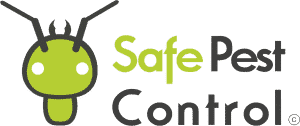Rodents, an incredibly diverse group of mammals defined by their sharp incisors that continually grow throughout their lives, represent a vast and significant part of the animal kingdom. This group encompasses a wide array of species, from the commonly encountered house mice (Mus musculus) and various species of rats, to the more exotic and less frequently seen deer mice and jumping mice. Within their natural ecosystems, rodents play critical roles, often serving as prey for larger animals and participating in seed dispersion, which contributes to the health of our planet’s diverse habitats. However, the relationship between humans and rodents is more complex and, at times, fraught with challenges. This post aims to explore the multifaceted world of rodents, shedding light on their behaviors, the ecological roles they play, and the impacts they have on human habitats. More importantly, it will delve into effective strategies for managing rodent infestations, which can threaten both human health and property.
The Ubiquity of Rodents
Rodents exhibit an extraordinary ability to adapt and thrive in almost every terrestrial habitat, from dense forests and arid deserts to bustling urban environments. Their global distribution and diversity are testaments to their evolutionary success. Among the vast array of rodent species, house mice (Mus musculus) and rats, particularly the black rat (Rattus rattus), stand out for their close associations with human habitats. These species have not only adapted to live in proximity to humans but have also thrived, often to the detriment of other species live their human cohabitants.
House mice and rats are particularly noted for their remarkable reproductive capabilities. A single animal or pair of these rodents can produce a vast number of offspring in a relatively short period, exacerbating the challenges of controlling their populations in human-dominated landscapes. Moreover, their social behavior, which includes complex communication and hierarchical structures, further enables them to adapt to and overcome efforts at control and eradication.
Perhaps most notably, rodents play a significant role in the spread of diseases to humans. Their ability to carry and transmit pathogens that can cause serious illnesses and disease is a major public health concern. Diseases such as hantavirus, leptospirosis, and the bubonic plague are just a few examples of the zoonotic diseases associated with rodents. These diseases can be spread directly through contact with rodent urine, droppings, saliva, or a rodent bites themselves, or indirectly through vectors such as ticks, mites, and fleas that have fed on an infected rodent.
In addition to health concerns, rodents can cause substantial economic damage. They have been known to gnaw through electrical wiring, leading to fires; damage structural components of buildings; and contaminate food supplies, leading to significant economic losses.
Given their adaptability, reproductive capacity, and the health and economic impacts they can have, effective management and control of rodent populations are crucial. The first step in this process is understanding the behaviors and ecology of these animals, which can inform more effective and humane control strategies. By acknowledging the role of rodents in our ecosystems and the challenges they pose in our homes and cities, we can develop integrated pest management approaches that address the root causes of infestations, reduce risks to human health and property, and maintain ecological balance.
The Hidden Dangers of Rodent Infestations
When we see deer mice and think of rodent infestations, the image that often comes to mind is one of mere inconvenience—unwanted guests that scatter when the lights turn on. However, the reality of living with rodents like deer mice, house mice, and rats is far grimmer, touching on serious health risks that can affect humans and pets alike. These small mammals are not just a nuisance but a significant hazard to human health and property.
A Vector of Diseases
One of the most alarming aspects of Sydney rodent infestations is their potential to contaminate food sources and spread diseases. Their droppings, urine, and even saliva can harbor pathogens that lead to illnesses such diseases as hantavirus, leptospirosis, and rat bite fever. These diseases can be transmitted directly, through bites or handling of rodents, or indirectly, by coming into contact with surfaces or food contaminated with rodent feces or excreta.
The health risks pet rodents extend beyond these diseases. Rodent droppings and urine contribute to poor air quality and can trigger allergic reactions and respiratory issues in humans. The presence of pet rodents alone in a home or business can thus not only lead to disease but can also degrade living conditions and wellbeing.
Damage Beyond the Surface
Rodents possess a natural instinct to gnaw, driven by the need to keep their continuously growing teeth at a manageable length. This gnawing habit can lead to extensive damage to property. Electrical wires, insulation, wooden beams, and even pipes are not safe from their teeth. The damage can result in fire hazards, water damage, and costly repairs, posing a significant risk to the safety and structural integrity of infested buildings.
Signs of Rodent Activity
Early detection of a rodent infestation is critical for effective control and mitigation of these risks. Homeowners and property managers should be vigilant for signs of rodent activity, which can be more subtle than one might expect.
Rodent Droppings: These are perhaps the most obvious sign of an infestation. Rodent droppings are often found along walls, near food sources, or in hidden areas like the back of cabinets and closets. The appearance of new droppings can indicate active infestations.
Gnaw Marks: Rodents leave behind gnaw marks on furniture, walls, and food packaging as they explore and feed. These marks can often be distinguished from those made by other pests by their size and location.
Sounds of Activity: The sound of scurrying feet in the walls or ceiling, especially at night when rodents are most active, can be a clear sign of an infestation.
Urine Trails: Rodent urine can fluoresce under ultraviolet light, making black lights a useful tool in detecting the paths rodents commonly travel.
Recognizing these signs early can make a significant difference in the effectiveness of pest control efforts, reducing the health risks and property damage associated with rodent infestations. Understanding the serious implications of living alongside rodents is the first step in motivating action to address and prevent these unwanted incursions into our homes and workplaces.
Controlling Rodents: The First Steps
The battle against rodents in our homes and businesses is ongoing, with their adaptability and rapid reproductive rates presenting a formidable challenge. Yet, understanding and tackling this issue doesn’t have to feel like an insurmountable task. The first line of defense in controlling rodents involves a combination of preventative measures and effective intervention strategies. Let’s explore the initial steps you can take to keep rodents at bay and address any existing infestations.
Prevention is Key
Preventative measures are the cornerstone of effective rodent control. By making your environment less inviting to rodents, you can significantly decrease the likelihood of an infestation.
Seal Entry Points: Rodents can squeeze through surprisingly small openings. Seal gaps and holes in your home’s exterior with materials like steel wool and hardware cloth. Pay special attention to areas where utilities and pipes enter the home, as these can be common entry points for rodents.
Rodent-Proof Food Storage: Store food, including pet food, in rodent-proof containers with tight-fitting lids. This not only protects your food from contamination but also removes potential food sources that attract rodents.
Maintain Cleanliness: Regularly dispose of garbage and keep your environment clean. Rodents are attracted to food scraps and cluttered areas that offer potential nesting sites.
Effective Intervention
If you find yourself dealing with an existing rodent infestation, it’s important to act quickly to prevent further spread of infected rodents and minimize health risks and property damage.
Live Traps: Setting up live traps can be an effective and humane way to capture rodents. Place traps in areas where rodent activity has been noticed, using bait like peanut butter to lure them in.
Professional Pest Control: Sometimes, an infestation can be too extensive or difficult for a layperson to manage alone. In such cases, contacting a professional pest control company can provide the expertise and tools needed to effectively address the problem. Pest control professionals can assess the situation, identify the species of rodent, and implement a targeted control strategy.
Understanding Rodent Behavior
Effective rodent control isn’t just about implementing measures; it’s also about understanding the behavior and habitat preferences of rodents. This knowledge can guide your prevention and control efforts, making them more targeted and effective. For instance, knowing that rodents prefer dark, cluttered areas for nesting can motivate efforts to keep spaces clean and organized.
Professional Rodent Control
Due to their adaptability and prolific nature, rodents can sometimes outmaneuver even the most diligent prevention disease control efforts. When facing a significant infestation, professional commercial pest control becomes not just helpful but necessary. Pest control professionals have access to tools and methods that are not typically available to the public, allowing for safer and more effective eradication of rodent populations.
Remember, controlling rodents is a proactive and ongoing process. By taking the first steps towards prevention and being prepared to act swiftly in the face of an infestation, you can protect your home or business from the health risks and damages rodents can cause.
If you’re seeking expert advice or assistance with a rodent problem, consider reaching out to SMART Digital Pest Control. Our team at Safe Pest Control is equipped to offer solutions tailored to your specific situation. For more information, contact us on 1300 119 085.
Health Risks and Environmental Impact
Rodents, insects, particularly rats and mice, are often carriers of diseases, which can have significant health implications for humans and pets. Diseases spread by rodents include leptospirosis, hantavirus, and the bubonic plague, among others. Infected rodents shed viruses and bacteria through their droppings, urine, and saliva, contaminating surfaces, food, and water. Direct contact with these contaminants, or indirectly through the bite of an infected flea, can lead to severe health issues.
Pets, especially those that might see rodents as prey, are at risk of diseases like rat bite fever if they come into direct contact with rodents or their droppings. It’s crucial to manage rodent populations to prevent exposure spread diseases to pets and humans alike.
Moreover, rodent urine and rodent feces can contaminate insulation and building materials, leading to unpleasant odors and potential health risks. The presence of a dead rodent or rodents can further exacerbate these issues, necessitating prompt and safe removal.
Economic Impact of Rodent Infestations
Rodent infestations are not just a health hazard; they also pose a significant economic threat that affects various sectors, from agriculture to urban development. Understanding the financial implications of rodent activity is crucial for recognizing the importance of effective pest control strategies.
Property Damage and Food Contamination
Rodents have a natural inclination to gnaw, which can lead to severe property damage. Electrical wiring, plumbing, and structural elements of buildings and homes can all fall victim to their sharp teeth, potentially causing fire hazards and water damage that require expensive repairs. Additionally, rodents contaminate food supplies and contaminated materials with their droppings, urine, and saliva. In environments such as restaurants, supermarkets, and homes, this contamination can lead to substantial financial loss and health risks, necessitating the disposal of affected contaminated materials and food products.
Impact on Agriculture
In agricultural settings, rodents present a direct threat to food security and economic stability. They consume and contaminate crops and stored food products, leading to significant agricultural losses. The cost of rodent damage to agriculture can run into billions of dollars annually worldwide, highlighting the need for effective control measures in these environments.
The Necessity of Pest Control Measures
The economic impact of rodents is further compounded by the cost of pest control measures. Whether it’s residential properties, commercial establishments, or agricultural fields, managing rodent populations requires investment in pest control solutions. While these measures incur costs, they are essential for mitigating the greater economic losses that unchecked rodent populations can cause.
Integrated Pest Management for Rodents
To address the complex challenge of rodent control in an economically and environmentally sustainable way, Integrated Pest Management (IPM) offers a comprehensive approach. IPM involves the strategic use of a combination of methods to manage pest populations effectively.
Components of IPM
Biological Control: Utilizing natural predators or biological agents to reduce rodent populations.
Physical Control: Employing traps, barriers, and other mechanical devices to prevent rodent access and capture existing populations.
Chemical Control: Applying pesticides and rodenticides judiciously, focusing on targeted applications that minimize environmental impact and reduce the risk of non-target species being affected.
Role of Professional Pest Control
Professional pest control companies are integral to the successful implementation of IPM strategies. With specialized knowledge and access to advanced tools and methods, these professionals can offer effective solutions tailored to the specific needs of each situation. They can conduct thorough assessments to determine the extent of infestations, identify how rodents are entering the property, and develop a comprehensive plan that addresses both immediate concerns and long-term prevention.
By combining efforts to seal entry points, use rodent-proof containers for food storage, and apply targeted control measures, IPM aims to reduce both the economic impact of rodent infestations and the health risks associated with these pests. Professional pest control services play a pivotal role in this process, providing the expertise needed to tackle rodent problems effectively and sustainably.
Proactive Measures and Preventive Strategies
Prevention is key in managing rodent populations. Simple steps like storing food in thick plastic or glass containers with tight-fitting lids can deter rodents from infesting your space. Similarly, reducing clutter and eliminating potential nesting areas can make your environment less appealing to rodents. Regularly inspecting your home for signs of rodent activity, such as: rodent droppings everywhere, gnaw marks, and tracks, can help catch infestations early, making them easier to manage.
For those considering a new pet rodent, like guinea pigs or fancy mice, it’s essential to understand their needs and how to safely integrate them into your home without attracting wild rodents. Keeping the pet rodent and food in secure containers and maintaining cleanliness can prevent unwanted guests.
While rodents are a part of our natural world eating food, and sometimes our homes as pets, wild infestations pose significant health, economic, and safety risks. By understanding rodent behavior, implementing preventive measures, and seeking professional assistance when necessary, it’s possible to manage these risks effectively.
If you need more information on how SMART Digital Pest Control can help your business, contact our team at Safe Pest Control on 1300 119 085.
Recognizing and Addressing Rodent Infestations
Identifying a rodent infestation early is critical for prompt and effective control. Common indicators of rodent presence include sightings of live or dead rodents eating food, sounds of movement in walls or ceilings, and signs of gnawing on food packaging or structures. However, the most definitive signs are rodent droppings and tracks in rodent contaminated areas. These can often be found in secluded areas, along kitchen counters, inside cabinets, and around food storage areas.
When addressing an infestation most rodents, safety is paramount. Wearing gloves and masks is essential when cleaning rodent-contaminated areas to keep rodent bites and prevent exposure to harmful pathogens. Surfaces where rodents have been active should be thoroughly cleaned with disinfectants to kill bacteria and viruses. Always wash hands thoroughly after handling rodent materials, including after removing gloves.
The Role of Professional Pest Control
For severe infestations, enlisting the help of a professional pest control company is often the most effective course of action. These professionals can offer comprehensive solutions that go beyond simple trapping and removal. They can identify and seal entry points to prevent future infestations, recommend changes to reduce the property’s attractiveness to rodents, and provide targeted treatments to eliminate existing populations.
Professional pest control services are particularly vital in cases of widespread infestation or when dealing with larger rodents, which can be more challenging to manage. They bring expertise in handling potentially dangerous situations, such as the removal of dead rodents or the cleanup of large areas of rodent contamination, minimizing health risks to humans and pets.
DIY Measures: Limitations and Considerations
While DIY measures can be effective for small infestations, they have limitations. Improper use of traps or poisons can pose risks to children, pets, and non-target wildlife. Moreover, without addressing the root causes of infestation, such as access points and attractants, rodents are likely to return.
Preventive measures, including using rodent-proof containers for food storage, securing trash cans, removing gloves and maintaining a clean environment, can significantly reduce the risk of infestation. However, for ongoing or severe problems, professional intervention may be necessary to ensure complete eradication and prevent future issues.
A Comprehensive Approach to Rodent Control
Rodents are a fact of life in many parts of the world, but with informed strategies and professional assistance when needed, managing their presence in our homes and businesses is entirely feasible. Understanding rodent behavior, taking proactive prevention measures, and recognizing when to call in experts can help keep these creatures in their place — outside and away from our living spaces.
Effective rodent management not only protects our health and property but also contributes to the well-being of our communities by preventing the spread of diseases and maintaining sanitary conditions. Whether dealing with a current infestation or taking steps to prevent future ones, remember that resources and expertise are available to help.
If you’re facing challenges with rodent control or simply wish to fortify your defenses against these persistent pests, don’t hesitate to reach out for professional guidance. For more information on how SMART Digital Pest Control can assist your business, contact our team at Safe Pest Control on 1300 119 085.
FAQs About Rodents
What defines a rodent?
Rodents are mammals characterized by their single pair of continuously growing incisors in both the upper and lower jaws. These teeth are kept sharp by gnawing on various materials. Rodents are found worldwide and include species such small animals such as mice, rats, squirrels, and beavers. They are known for their quick reproduction rates and ability to adapt to various environments, often living close to human settlements.
What are the top 7 types of rodents?
House Mice (Mus musculus): Common in homes worldwide, these small rodents are known for their adaptability to human environments.
Rats (various species): Including the Norway rat and the roof rat, rats are larger than mice and pose significant health and property risks.
Squirrels: Found in both urban and wooded areas, squirrels are known for their bushy tails and tree-dwelling habits.
Hamsters: Popular as pets, these small rodents are nocturnal and require a wheel for exercise.
Guinea Pigs: Another favorite pet, guinea pigs are larger than hamsters and highly social.
Beavers: Known for their dam-building, beavers are one of the largest rodent species.
Gerbils: Desert rodents that are often kept as pets, gerbils have a tail almost equal to their body length.
What animal is in the rodent family?
The rodent family includes a wide range mammal species of animals, from small creatures like mice and rats to larger ones like capybaras, which are the largest rodents in the world. Other members include squirrels, hamsters rats, beavers, porcupines, and guinea pigs. All rodents share the common characteristic of having a set of incisors that grow continuously throughout their lives.
What rodent is native to Australia?
Australia is home to several native rodent species, most notably the various species of native rats and mice found across the continent. These include the common bush rat and mice and the water rat. Unlike many parts of the world where rodents are often viewed negatively, many of Australia’s native rodents play essential roles in the ecosystem, such as seed dispersal.
On-Time Service

5 STAR SERVICE BASED ON 100+ GOOGLE REVIEWS
PET & FAMILY FRIENDLY TREATMENT

ALL YEAR-ROUND PROTECTION
Take Back Control Now
8
REASON TO CHOOSE SAFE PEST CONTROL
- Guarantee protection all year-round
- 30 Years Collective Experience
- An impeccable reputation across Sydney's Suburbs
- Certified treatments & written Warranty On all work carried out
- Family Owned & Operated
- Rated #1 Pest Control In Sydney NSW
- No Mess, No Smell
- Family & Pet Friendly Treatments
REQUEST A QUOTE

